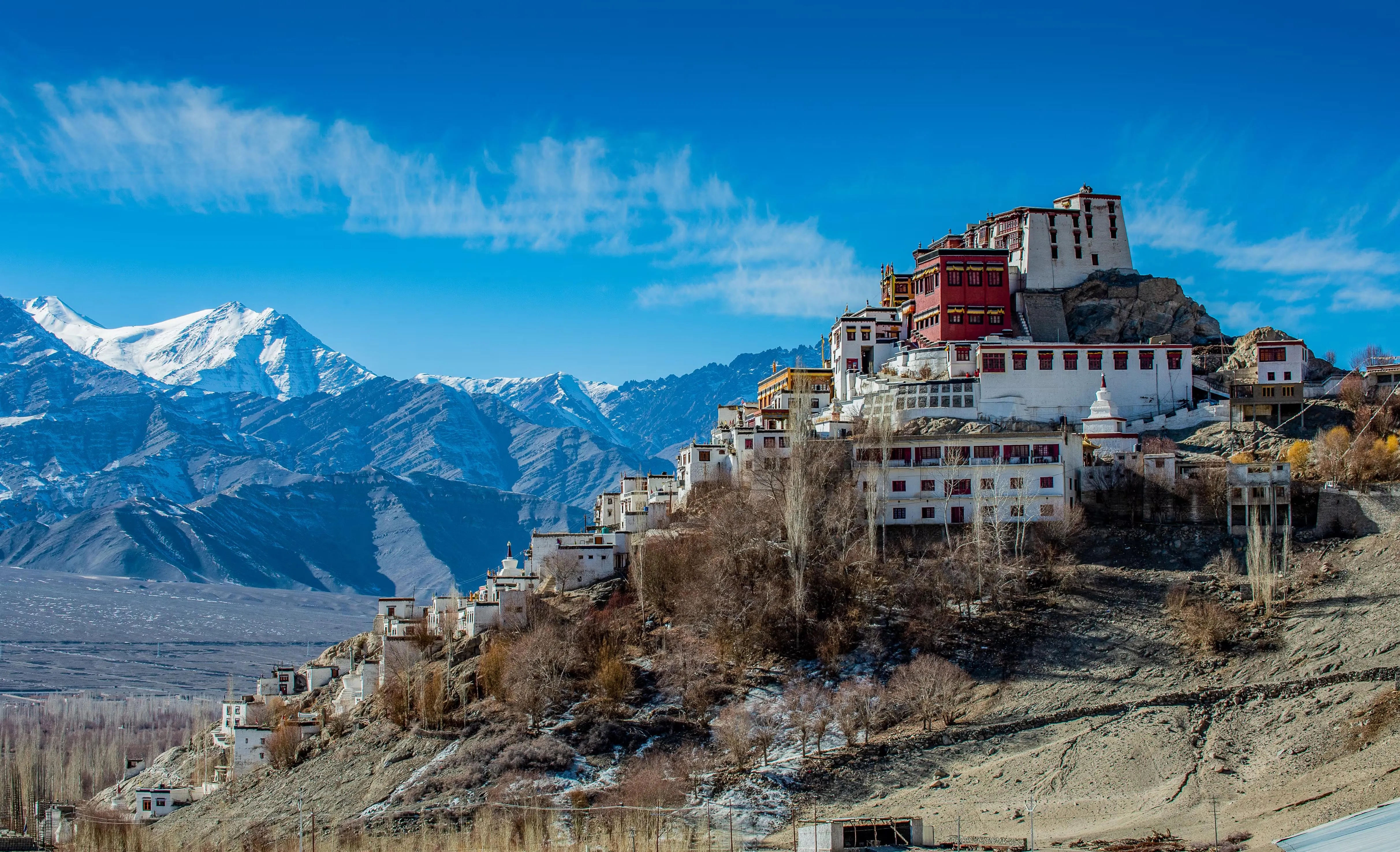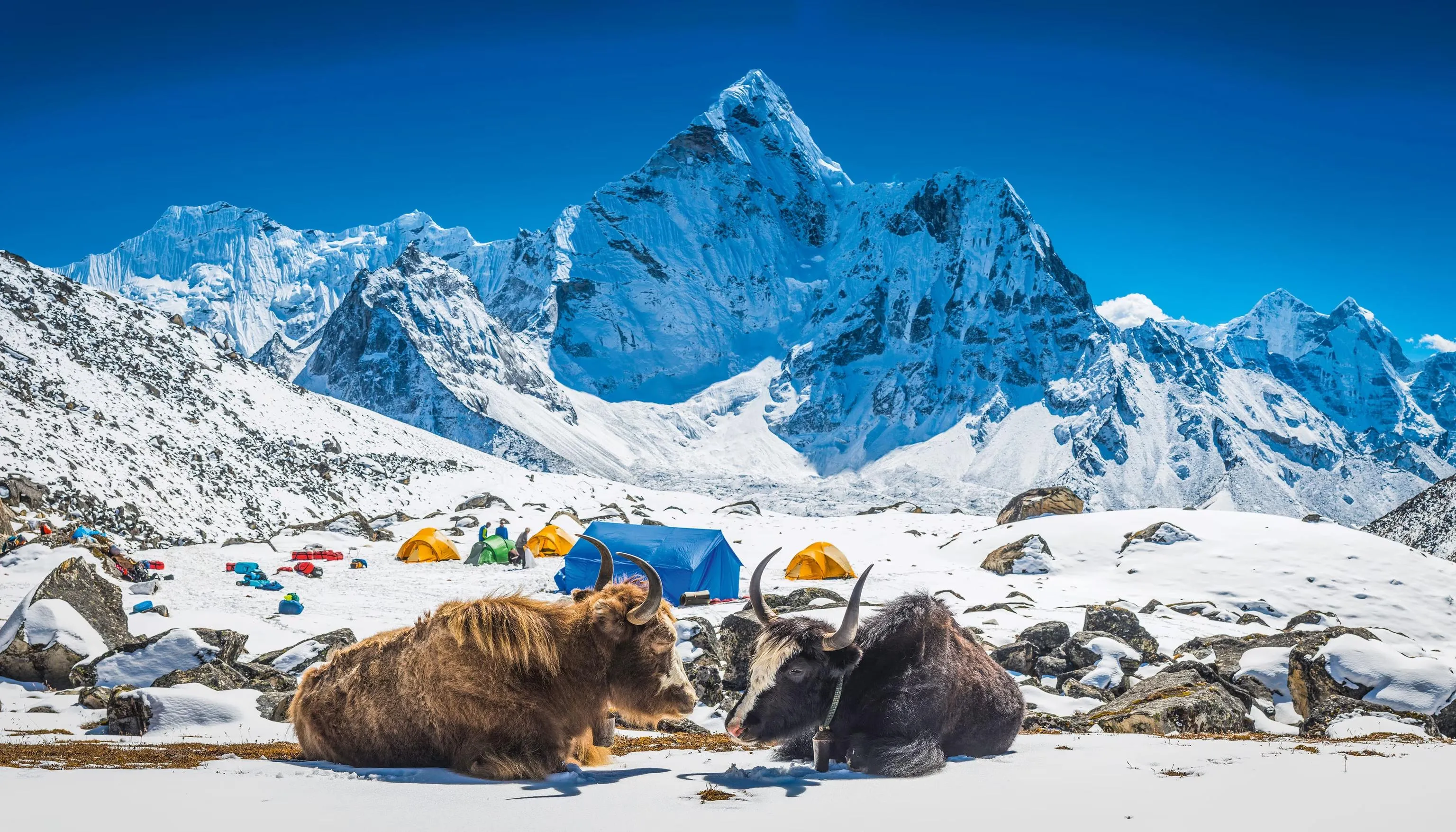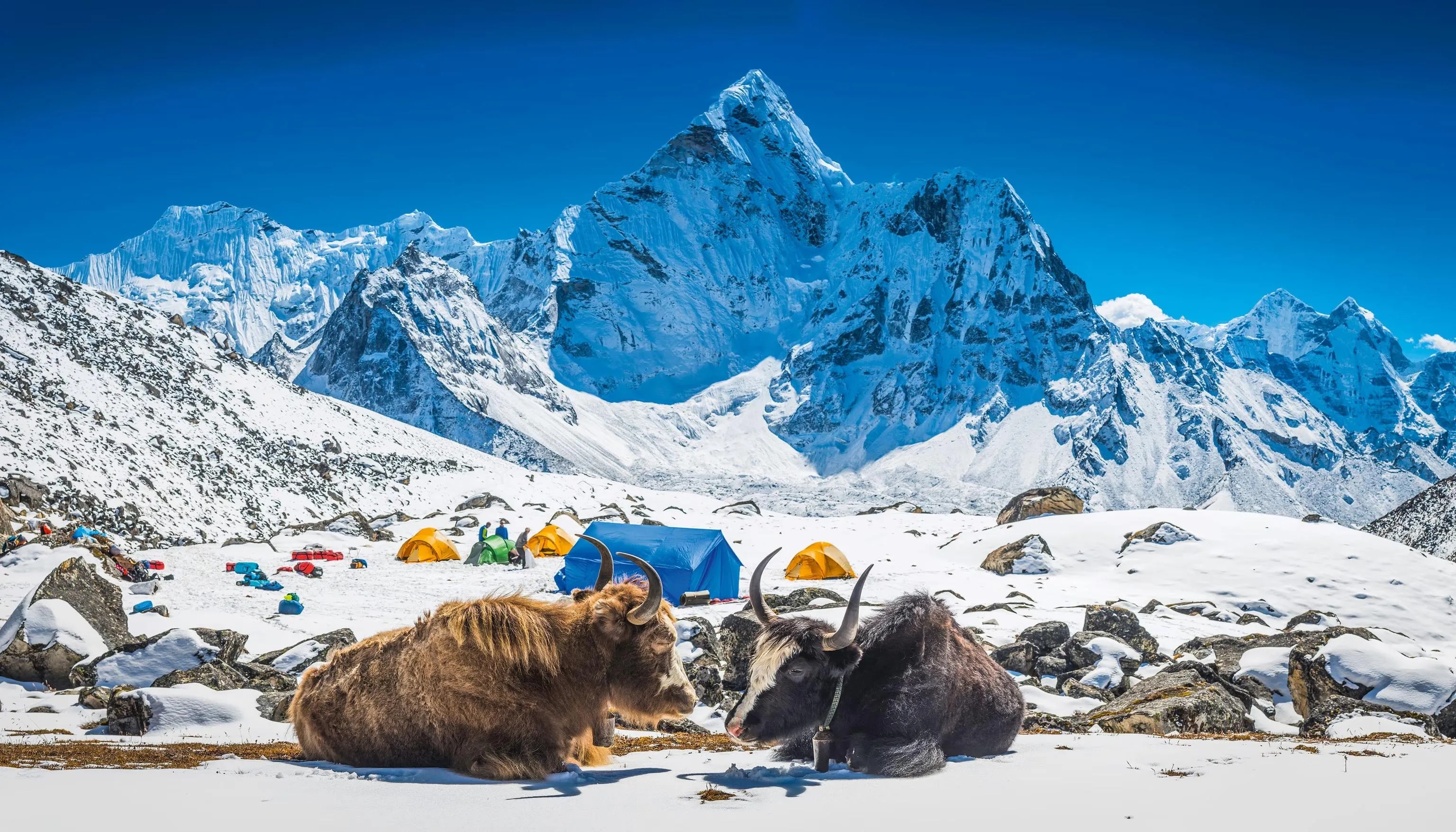15 Best Routes for First-Time Trekkers in the World's Highest Mountains
I've been trekking in the Himalayas for over a decade, and I can tell you that choosing your first Himalayan treks for beginners is one of the most important decisions you'll make. After personally completing 25+ treks across Uttarakhand, Himachal Pradesh, and Nepal, I've compiled this comprehensive guide to help you start your Himalayan journey safely and successfully. Whether you're seeking snow-capped peaks, alpine meadows, or cultural immersion, this guide covers everything from essential preparation tips to the most beginner-friendly routes in the region.
Why Choose Himalayas for Your First Trek

When I first considered Himalayan treks for beginners, I was overwhelmed by the sheer magnitude of options available. After experiencing countless treks across different mountain ranges worldwide, I can confidently say that the Himalayas offer the perfect combination of accessibility, natural beauty, and cultural richness that makes them ideal for first-time trekkers.
The Indian Himalayas, particularly in Uttarakhand and Himachal Pradesh, provide a unique advantage for beginners. Unlike more remote mountain ranges, these regions offer excellent infrastructure, experienced local guides, and well-established rescue systems. During my first trek to Kedarkantha in 2013, I was amazed by how well-organized the entire experience was, despite being in such a remote location.
What sets Himalayan treks for beginners apart is the incredible diversity you'll encounter. In just a few days, you can experience dense rhododendron forests, alpine meadows carpeted with wildflowers, pristine mountain lakes, and panoramic views of snow-capped peaks that reach over 20,000 feet. This variety ensures that every day brings new discoveries and prevents the monotony that can affect longer, more uniform treks.
The cultural aspect cannot be overstated. During my treks, I've stayed in remote villages where time seems to have stood still, shared meals with local families, and learned about ancient traditions that have been preserved for centuries. These experiences, combined with the natural beauty, create memories that last a lifetime and often inspire trekkers to return year after year.
Key Advantages for Beginners:
- Gradual altitude gain: Most beginner treks stay below 13,000 feet, minimizing altitude sickness risks
- Established infrastructure: Good connectivity, medical facilities, and rescue services
- Experienced guides: Local expertise and safety knowledge
- Varied difficulty levels: Options for every fitness level
- Cultural immersion: Interaction with local communities and traditions
Essential Preparation Guide for Himalayan Treks for Beginners
Proper preparation is crucial for a successful and safe trekking experience. Based on my years of experience with Himalayan treks for beginners, I've developed a comprehensive preparation strategy that I share with every first-time trekker I mentor. The key is starting your preparation at least 6-8 weeks before your planned trek date.
Physical Fitness
Start with 30-minute daily walks, gradually increasing to 2-hour hikes with a loaded backpack. Include cardio exercises and basic strength training focusing on leg muscles and core stability.
Mental Preparation
Practice mindfulness and stress management techniques. Read about your chosen trek, watch videos, and mentally prepare for challenges like weather changes and physical discomfort.
Health Check
Consult your doctor, especially if you have pre-existing conditions. Get necessary vaccinations and carry a comprehensive first-aid kit with altitude sickness medication.
One aspect that many guides for Himalayan treks for beginners overlook is the importance of acclimatization practice. I recommend spending time at moderate altitudes (6,000-8,000 feet) before attempting your main trek. During my early trekking days, I learned this lesson the hard way when altitude sickness cut short what should have been an incredible experience on the Chopta-Chandrashila trek.
Expert advice on choosing the best Himalayan treks for beginners
Top 15 Himalayan Treks for Beginners
After personally completing and guiding hundreds of trekkers on various routes, I've carefully selected these 15 Himalayan treks for beginners based on safety, accessibility, scenic beauty, and overall experience quality. Each trek has been chosen to provide a perfect introduction to Himalayan trekking while ensuring memorable experiences that will inspire your future adventures.
The remaining nine treks on my list include the colorful Hampta Pass (showcasing the dramatic transition from lush Kullu valley to barren Spiti), the serene Beas Kund near Manali, and the challenging but rewarding Rupin Pass. Each of these Himalayan treks for beginners offers unique experiences that build confidence and skills for more advanced adventures. Similar to the incredible diversity found in Rocky Mountain trails, these routes provide progressively challenging terrain that helps develop your trekking abilities.
Pro Tip from My Experience:
Start with shorter 3-4 day treks before attempting week-long adventures. This approach allowed me to understand my body's response to altitude and build confidence gradually. Each successful trek becomes a stepping stone to more challenging adventures, just like the progression I've seen in European alpine experiences.
Must-Have Trekking Gear for Himalayan Adventures
Having the right gear can make the difference between a memorable adventure and a miserable experience. Over my years of guiding Himalayan treks for beginners, I've seen how proper equipment transforms nervous first-timers into confident trekkers. The key is investing in quality essentials while avoiding unnecessary items that add weight to your pack.Footwear
Waterproof, ankle-supporting boots are non-negotiable. I recommend mid-cut boots for better ankle protection on rocky terrain.
Backpack
40-50L capacity with good support system. Features like rain cover and multiple compartments are essential for organization.
Layering System
Base layer, insulation layer, and waterproof shell. This system adapts to changing mountain weather conditions effectively.
Sleep System
Quality sleeping bag rated for expected temperatures, plus insulated sleeping pad for comfort and warmth isolation.
One mistake I frequently observe with Himalayan treks for beginners is over-packing. Every additional ounce feels like a pound after several hours of trekking. Focus on multi-purpose items and stick to the essentials. For example, a good pair of trekking poles serves multiple functions: stability on ascents and descents, tent pole backup, and river crossing aid.
Weather protection is crucial in the Himalayas, where conditions can change rapidly. I've experienced sudden snowstorms in August and blazing sunshine at 12,000 feet altitude. A reliable rain jacket, warm hat, and sun protection are as important as your boots. This comprehensive approach to gear selection mirrors the preparation needed for challenging US wilderness hikes, where being prepared for all conditions is essential.
Safety Tips & Best Practices for First-Time Himalayan Trekkers

Safety should never be compromised when undertaking Himalayan treks for beginners. In my decade of mountain experience, I've witnessed how proper safety protocols prevent emergencies and ensure everyone returns home with positive memories. The mountains are unforgiving, but they're also incredibly rewarding when approached with respect and preparation.
Critical Safety Rules:
- Never trek alone: Always go with experienced guides or groups, especially for Himalayan treks for beginners
- Monitor weather constantly: Mountain weather changes rapidly and can be life-threatening
- Recognize altitude sickness symptoms: Headache, nausea, dizziness require immediate descent
- Carry emergency communication: Satellite phones or emergency beacons in remote areas
- Inform others of your plans: Share detailed itineraries with family and local authorities
Altitude acclimatization is perhaps the most critical aspect of safe Himalayan trekking. During my first high-altitude trek, I ignored early symptoms of altitude sickness and nearly had to be evacuated. Since then, I always emphasize the importance of gradual ascent, proper hydration, and listening to your body. For Himalayan treks for beginners, I recommend staying below 12,000 feet for your first few adventures.
River crossings represent another significant hazard that's often underestimated. Himalayan rivers are fed by glacial melt and can change dramatically within hours. I've seen ankle-deep streams become raging torrents after afternoon snowmelt. Always cross early in the morning when water levels are lowest, and never attempt to cross alone. These safety considerations are similar to those needed for any challenging mountain environment worldwide.
Emergency preparedness goes beyond carrying a first-aid kit. Know how to use everything in your kit, understand basic wilderness first aid, and practice navigation skills before your trek. I always carry a whistle, headlamp with extra batteries, emergency shelter, and high-energy food reserves. These items have proven invaluable during unexpected weather delays and emergency situations over the years.
Best Seasons for Himalayan Treks for Beginners
Timing is everything when planning Himalayan treks for beginners. Each season offers unique experiences, challenges, and rewards. Having trekked in all four seasons across different regions, I can provide insights that will help you choose the perfect time for your first Himalayan adventure based on your preferences, experience level, and desired outcomes.
Spring (March-May)
Perfect for Beginners
- Moderate temperatures (10-20°C)
- Rhododendron blooms
- Clear mountain views
- Ideal for most beginner treks
Summer (June-August)
Valley of Flowers Season
- Monsoon rains in lower elevations
- Wildflower blooms
- High-altitude treks accessible
- Perfect for Valley of Flowers
Autumn (Sept-Nov)
Peak Trekking Season
- Crystal clear skies
- Stable weather patterns
- Comfortable temperatures
- Best visibility of peaks
Winter (Dec-Feb)
Snow Trek Experience
- Snow-covered landscapes
- Kedarkantha and Brahmatal
- Crisp, clear days
- Unique winter wildlife
For your first Himalayan treks for beginners, I strongly recommend starting in either spring (March-May) or autumn (September-November). These seasons offer the most predictable weather patterns, comfortable temperatures, and the best visibility for enjoying the spectacular mountain scenery. During my early trekking years, these seasons provided the confidence-building experiences that encouraged me to tackle more challenging adventures.
Winter trekking adds an extra layer of complexity but offers unparalleled beauty. Snow transforms familiar trails into magical landscapes, but requires additional gear, skills, and preparation. If you're drawn to winter Himalayan treks for beginners, start with shorter, well-established routes like Kedarkantha or Brahmatal, which have excellent support infrastructure and experienced guides familiar with winter conditions.
Conclusion: Your Himalayan Adventure Awaits
Embarking on Himalayan treks for beginners represents more than just a physical challenge—it's a transformative journey that connects you with nature, tests your limits, and creates memories that last a lifetime. Throughout this comprehensive guide, I've shared insights gained from over a decade of Himalayan trekking experience, helping thousands of first-time trekkers discover the magic of these incredible mountains.
The key to successful Himalayan treks for beginners lies in proper preparation, realistic expectations, and choosing the right trek for your fitness level and experience. Start with easier routes like Kedarkantha or Dayara Bugyal, build your confidence and skills, then gradually progress to more challenging adventures. Remember that every expert was once a beginner—what matters is taking that first step with proper planning and safety precautions.
The Himalayas have taught me patience, resilience, and respect for nature's power. They've also provided some of the most beautiful and peaceful moments of my life. Whether you're seeking spiritual growth, physical challenge, or simply the joy of witnessing some of Earth's most spectacular scenery, these mountains have something profound to offer every trekker willing to explore them responsibly.
Ready to Start Your Journey?
The mountains are calling, and your adventure begins with a single step. Choose your first trek, prepare thoroughly, and embrace the incredible experience that awaits you in the Himalayas.
Your first Himalayan treks for beginners will mark the beginning of a lifelong love affair with these magnificent mountains. Take the knowledge from this guide, prepare well, trek safely, and most importantly, enjoy every moment of your incredible Himalayan adventure. The mountains are waiting for you, and I'm confident that like thousands of others before you, you'll return home with stories that will inspire others to follow in your footsteps.


